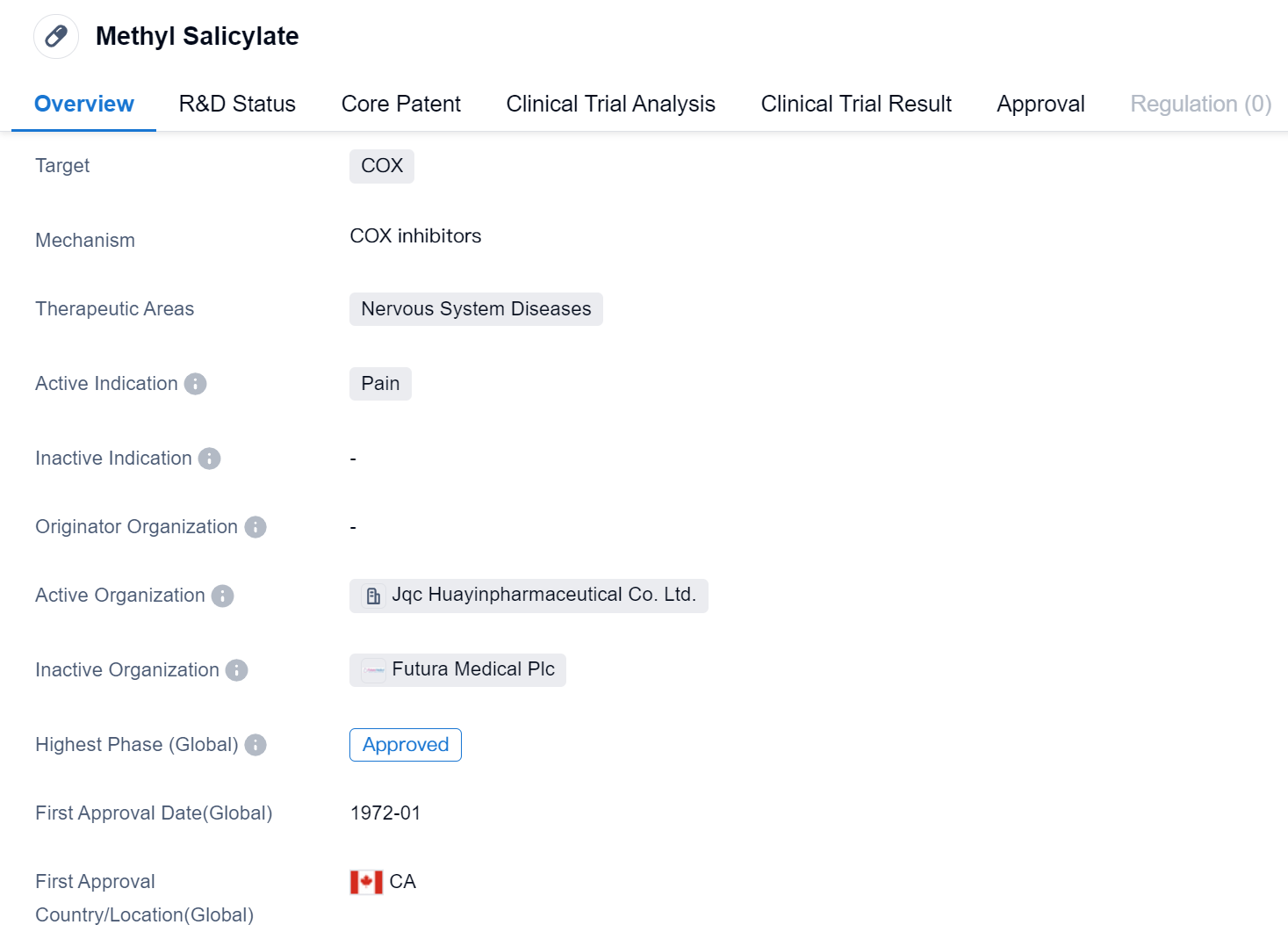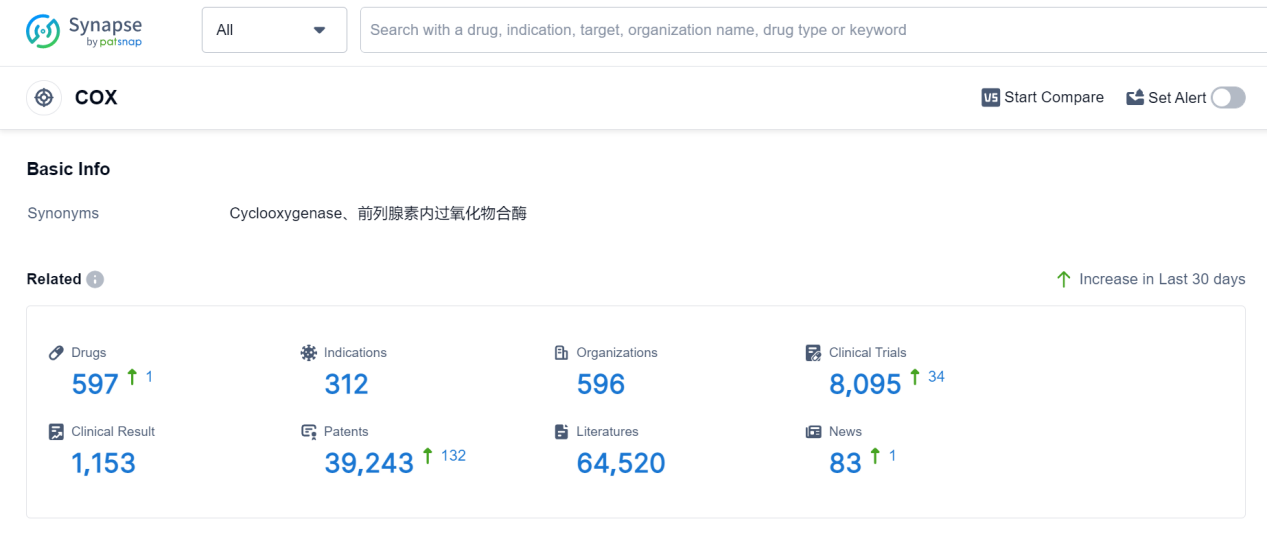Methyl Salicylate: Detailed Review of its Transformative R&D Success
Methyl Salicylate's R&D Progress
Methyl Salicylate is a small molecule drug that primarily targets COX, making it suitable for the treatment of various nervous system diseases. Its active indication is pain relief, making it a potential solution for patients suffering from pain-related conditions.
The highest R&D phase of Methyl Salicylate is approved. It received its first approval in Canada in January 1972, making it a well-established drug with a long history of use.
As a small molecule drug, Methyl Salicylate is likely to have a relatively simple chemical structure, allowing for easy synthesis and production. This characteristic may contribute to its widespread availability and affordability, making it accessible to a larger patient population.
Given its therapeutic areas of focus, Methyl Salicylate may be particularly beneficial for individuals with nervous system diseases such as neuropathic pain, migraines, or other conditions that cause chronic pain. By targeting COX, the drug may help alleviate pain by reducing inflammation and inhibiting the production of pain-inducing substances.
The approval of Methyl Salicylate in global markets suggests its potential to address the unmet medical needs of patients suffering from pain-related conditions.
👇Please click on the image below to directly access the latest data (R&D Status | Core Patent | Clinical Trial | Approval status in Global countries) of this drug.
Mechanism of Action for Methyl Salicylate: COX inhibitors
COX inhibitors, also known as cyclooxygenase inhibitors, are a class of drugs that work by inhibiting the activity of the enzyme cyclooxygenase. Cyclooxygenase is responsible for the production of prostaglandins, which are hormone-like substances involved in inflammation, pain, and fever. By inhibiting COX, these drugs reduce the production of prostaglandins, leading to anti-inflammatory, analgesic (pain-relieving), and antipyretic (fever-reducing) effects.
From a biomedical perspective, COX inhibitors are commonly used in the treatment of various conditions such as arthritis, menstrual cramps, and acute pain. They can help alleviate pain, reduce inflammation, and improve overall comfort. However, it's important to note that long-term use of COX inhibitors may have side effects on the gastrointestinal system and cardiovascular system, so they should be used under medical supervision and guidance.
Drug Target R&D Trends for Methyl Salicylate
COX, or cyclooxygenase, is an enzyme that plays a crucial role in the human body's inflammatory response. It is responsible for the production of prostaglandins, which are hormone-like substances involved in various physiological processes. COX exists in two isoforms, COX-1 and COX-2. COX-1 is constitutively expressed and involved in maintaining normal bodily functions, such as protecting the stomach lining and regulating blood clotting. On the other hand, COX-2 is induced during inflammation and is primarily responsible for the production of prostaglandins that cause pain, fever, and swelling. Understanding the role of COX has led to the development of drugs called COX inhibitors, which are used to manage pain, inflammation, and other related conditions.
According to Patsnap Synapse, as of 7 Sep 2023, there are a total of 597 COX drugs worldwide, from 596 organizations, covering 312 indications, and conducting 8095 clinical trials.
👇Please click on the picture link below for free registration or log in directly if you have a freemium account, you can browse the latest research progress on drugs, indications, organizations, clinical trials, clinical results, and drug patents related to this target
Conclusion
In conclusion, Methyl Salicylate is a small molecule drug that targets COX and is primarily used for pain relief in the treatment of nervous system diseases. With its highest phase of approval achieved globally, as well as its first approval in Canada in 1972, the drug has a well-established track record. Its potential to alleviate pain and its accessibility due to its small molecule nature make it a promising option for patients in need of pain management.






